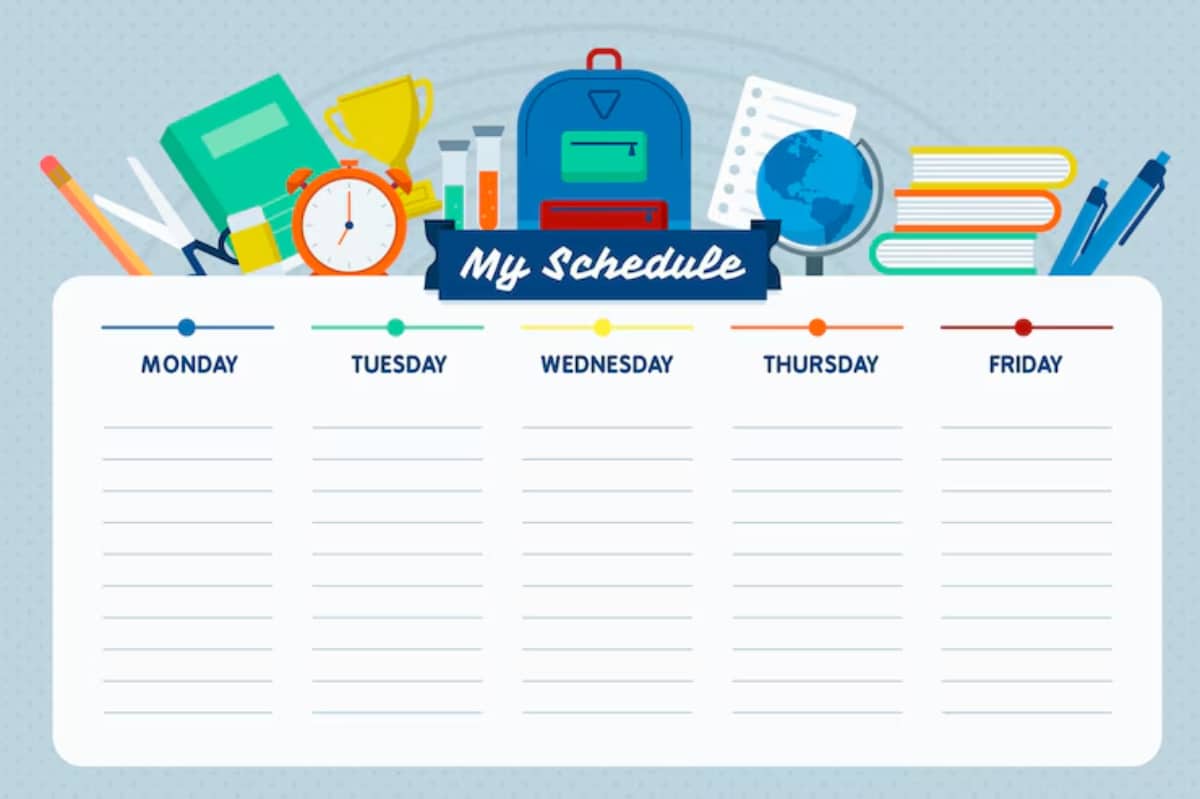
Block Scheduling for Homeschoolers: A Step-by-Step Guide
Time can be one of your biggest challenges when homeschooling. The day fills up fast between lessons, housework, errands, and maybe even work-from-home tasks. That’s where a homeschool block schedule can make all the difference. It helps you focus, avoid constant switching, and bring more rhythm to your home education routine.
This step-by-step guide will explain how to create a simple, effective block schedule that suits your family’s needs. Whether new to homeschooling or just looking to get more organised, this method can help you feel more in control of your time.
What Is Block Scheduling in Homeschooling?
Block scheduling is organising your day into set chunks—or “blocks”—of time. Instead of switching subjects every 30–45 minutes, you dedicate larger periods (like 60–90 minutes) to focus on one area.
For example:
- Morning Block – Core subjects like maths and reading
- Midday Block – Science, history, or nature study
- Afternoon Block – Creative work or independent reading
This structure reduces distractions and lets your child dive deeper into subjects without constantly shifting gears.

Why Use a Block Schedule?
Here are a few reasons many homeschool families love block scheduling:
- More Focus: Children (and parents!) can settle into one activity without watching the clock.
- Less Rush: Longer time slots mean you’re not cramming in a subject before moving on.
- More Flexibility: You can adjust blocks by day, age group, or workload.
- Better Time Management: Planning your day and avoiding burnout is easier.
It benefits families with multiple children, children who need more time with specific subjects, or anyone juggling work and school at home.
Step 1: Map Out Your Priorities
Start by listing your main homeschooling goals and subjects. What must get done daily? What can happen weekly?
Typical subjects include:
- Reading
- Writing
- Maths
- Science
- History
- Art or music
- Life skills or chores
Also include non-academic needs like:
- Meals
- Free play
- Outdoor time
- Rest or quiet time
Step 2: Break the Day Into Logical Blocks
Next, look at your family’s natural rhythm. Are your children more focused in the morning? Do you need quiet time in the afternoon?
A sample block layout might look like this:
| Time | Block Name | Activities |
| 8:00–9:30 | Morning Block | Breakfast + Core subjects |
| 9:30–10:00 | Movement Break | Walk, stretch, and outdoor play |
| 10:00–11:30 | Learning Block | Science, social studies |
| 11:30–1:00 | Lunch & Free Time | Eat, play, read |
| 1:00–2:00 | Creative Block | Art, music, projects |
| 2:00–3:00 | Quiet Time Block | Reading, audiobooks, rest |
Adjust times to suit your family’s pace and needs.
Step 3: Choose a Weekly or Daily Block Format
Some families prefer to rotate blocks throughout the week instead of cramming everything into one day.
Example: Weekly Block Focus
- Monday & Wednesday: Language arts and writing
- Tuesday & Thursday: Science and history
- Friday: Hands-on learning, field trips, or review
This approach gives you breathing space while still covering every subject.
Step 4: Keep It Flexible
Life happens. Appointments come up. Kids get restless. That’s why block scheduling isn’t about being rigid—it’s about giving your day a backbone that still bends.
Tips for flexibility:
- Build in buffer time between blocks
- Leave one block unplanned for catch-up.
- Use timers or gentle alarms to stay on track.
Remember: the goal is rhythm, not perfection.
Step 5: Try It for a Week and Adjust
Once you’ve created a basic block schedule, try it out for a week. Pay attention to what flows naturally and what feels forced.
Ask yourself:
- Which blocks worked best?
- Where did you feel rushed?
- Were the time slots realistic?
Make minor tweaks rather than overhauling everything. Sometimes a 15-minute shift can make all the difference.
Tools to Help You Stay Organised
You don’t need fancy software to manage a block schedule, but a few tools can help:
- Printable planners: Use a simple template for weekly or daily blocks.
- Dry-erase boards: Display the day’s blocks where everyone can see.
- Colour coding: Assign colours to blocks for each child or subject.
- Timers or alarms: Help transition between blocks smoothly.
Check out our blog on Best Printable Homeschool Planners for 2025 for templates you can use today.
Real-Life Example: The Martin Family
The Martins homeschool three children, ages 6, 9, and 13. They switched to block scheduling after struggling with constant interruptions.
Here’s what worked for them:
- Morning Block: All kids did reading and maths simultaneously, but at different levels.
- Afternoon Block: Project-based learning and group science experiments.
- Evening Block: Free time, chores, and family reading.
They said the new rhythm helped them stay calmer and gave the kids more independence.

Pros and Cons of Block Scheduling
Like any system, block scheduling has its ups and downs.
Pros:
- Better focus for longer tasks
- Simplifies your daily planning
- Reduces transitions and distractions
- Encourages deeper learning
Cons:
- Can feel too rigid for some families
- It may not work well with very young children
- Requires consistent time awareness
You can always blend block scheduling with other systems, like loop scheduling or checklists, to find your balance.
When to Revisit Your Schedule
Children grow, seasons change, and your family life evolves. Plan to review your schedule every term or as needed.
Look for signs like:
- Frequent frustration or fatigue
- Subjects being missed or rushed
- Too much screen time or chaos
Even small tweaks—like moving a core subject to an earlier block—can restore calm and focus.
Making the Most of Your Homeschool Day
Using a homeschool block schedule is about more than just structure. It’s about protecting your family’s time, creating space for deep learning, and building a rhythm that brings peace to your day.
If you’re overwhelmed by the constant shuffle of subjects and tasks, try creating a few simple blocks. Adjust as you go. You might just find that less juggling means more joy.
Ready to Try Block Scheduling?
Start small. Choose just three blocks for your day and see how it feels. Let your kids know the plan and check in at the end of the week to review together.
Have you tried block scheduling in your homeschool? Share your experience in the comments, or pass this along to another homeschooling family who might need a better daily flow.


